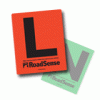 Commentary driving is a very useful tool for teaching a new driver. It involves narrating their observations, interpretations and intentions about the traffic situation as they drive. This narrative is expected to take place before the fact and gives the instructor or examiner insight into what the driver is seeing (or not seeing) and how they intend to proceed.
Commentary driving is a very useful tool for teaching a new driver. It involves narrating their observations, interpretations and intentions about the traffic situation as they drive. This narrative is expected to take place before the fact and gives the instructor or examiner insight into what the driver is seeing (or not seeing) and how they intend to proceed.
These comments do not need to be made using complete sentences as long as the thought is properly conveyed. The driver should describe everything important that he sees ahead, to the sides, and in the rear view mirrors. When there is time, he should announce the various alternatives possible and why his choice of action is best. Comments should include remarks about signs, signals, markings, hazardous situations, actions or expected actions of other road users.
From the student's point of view commentary driving assists with:
- Building an awareness of the amount of information that a driver must process
- Developing resistance to distraction
- Refining judgment about how far ahead to watch and how quickly to act or react
- Developing selective observation strategies
Benefits for the parent or instructor include the ability to assess:
- Is the driver scanning effectively?
- Are hazardous situations recognized early enough?
- Does the driver follow the traffic laws and maintain proper space margins?
- What is the driver missing that you need to train or retrain?
The current ICBC Class 5 road test requires a demonstration of commentary driving.
If you have never done this before, it is not as simple as you might think. Remember the cognitive overload when you were first learning to drive? Introduce it after your student driver has had a chance to become somewhat familiar with operating the vehicle.
A parent should practice this before becoming the instructor as it is a valuable teaching tool. Demonstrate to the hopeful new driver how she must use her eyes, what she must see, how to interpret it, and when to act in a safe and efficient manner.
The parent will also benefit as it focuses awareness and concentration on the driving task. It may be a good personal strategy to use when you are not feeling alert or are becoming fatigued.
Video Resources:
This 13 minute video by Rick August of Smart Drive Test outlines how a new driver may learn even faster by talking to themselves while they're driving and doing the manoeuvres and skills required to pass a road test.
This 10 minute video by Ian Fido of Sheffield Driving School in the UK explains anticipation and planning with commentary driving:
- Log in to post comments
